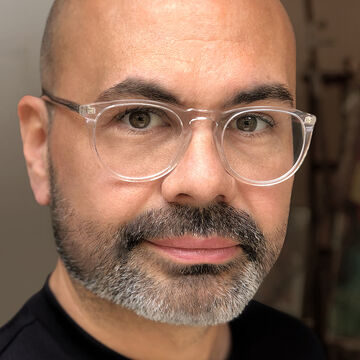

Pablo R Garcia
Professor
Contact
Bio
Professor, Department of Contemporary Practices; Director, Earl and Brenda Shapiro Center for Research + Collaboration (2017-2019); Chair, Faculty Contract and Tenure Review Board (2021-2024).
Education: B.Arch, Cornell University (1998); M.Arch, Princeton University (2003).
Bibliography: Tracing the Line - The Art of Drawing Machines and Pen Plotters, Vetro Editions; Data Dating: Love, Technology, Desire, Intellect Books; Atlas of Digital Architecture: Terminology, Concepts, Methods, Tools, Examples, Phenomena, Birkhauser Architecture; L'art au-delà du digital, Nouvelles éditions Scala; Academic Writing: Concepts and Connections, Oxford University Press; XXL - XS: New Directions in Ecological Design, DAP; Faceless: Re-inventing Privacy Through Subversive Media Strategies, De Gruyter.
Press/Reviews/Interviews: Art in America, Leonardo, Colossal, Mashable, Hyperallergic, Fast Company, WIRED, WIRED Design, WIRED Japan, WIRED Gadgetlab, WIRED UK, Dezeen, Huffington Post, Yahoo! News, Form Magazine, Core77, Artinfo, Neon Magazine, Tested, Trendhunter, Martha Stewart, The Creators Project, Engadget, Physics World, Chicago Reader, Better Living Through Design, The Journal of Natural Scientific Illustration, Motherboard, The Daily Mail, Pittsburgh Tribune, La Repubblica, Libération, The Architect's Newspaper, Gizmodo, The Daily Dot, OMNI, Chicago Tribune, Neural Magazine.
Collections: American Philosophical Society, Drawing Matter Trust (UK), Musée d'Art et Histoire (Geneva), National Media Museum (UK), Polytechnic Museum (Moscow), Princeton University Special Collections, The Science Museum (UK), Yale Center for British Art.
Lectures and Workshops: TEDx Vienna, MakerFaire San Francisco; Hubei Institute of Fine Arts, Wuhan, China; RMIT University, Melbourne, Australia; MIT, Cambridge, MA; Columbia University, New York, NY; FH Joanneum University of Applied Arts, Graz, Austria; Carleton College, Carleton, MN; Strelka Institute, St. Petersburg, Russia; OFFF Festival, Barcelona, Spain; KIKK Festival, Namur, Belgium; Resonate Festival, Belgrade, Serbia; Gray Area Festival, San Francisco; XOXO Festival, Portland, OR; Anderson Ranch Arts Center, Aspen, CO; Aksioma Institute of Contemporary Art, Ljubljana, Slovenia; The Frank Lloyd Wright Trust, Oak Park, Illinois; American Philosophical Society, Philadelphia, PA.
Awards: National Endowment for the Humanities Fellowship; Fulbright Distinguished Scholar (RMIT University, Melbourne, Australia); Visiting Scholar, University of Cambridge, UK; Core77 International Design Award.
Exhibitions: The European Fine Art Fair, Maastricht, The Netherlands; Musée d'Art et Histoire, Geneva, Switzerland; The Seoul Biennale of Architecture and Urbanism, Seoul, South Korea; Aksioma Institute for Contemporary Art, Ljubljana, Slovenia; iMAL Art Center for Digital Cultures & Technology, Brussels, Belgium; Edinburgh Digital Entertainment Festival, Edinburgh, UK; Utah Museum of Contemporary Art, Salt Lake City, Utah; 44th International Film Festival, Rotterdam, The Netherlands; Festival Bouillants, Rennes, France; Eyebeam Art + Technology Center, New York, NY; Mattress Factory Art Museum, Pittsburgh, PA.